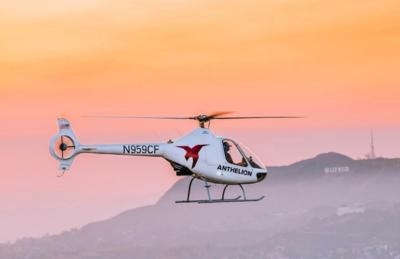Sat, Oct 02, 2021
AD 2021-19-07 Requires Replacing An Affected MR Non-Rotating Scissor Link With A Serviceable Part
The FAA is adopting a new airworthiness directive (AD) for certain Hélicoptères Guimbal Model CABRI G2 helicopters.

This AD was prompted by a report that, during scheduled maintenance on two helicopters, cracks were found on a certain main rotor (MR) non-rotating scissor link. This AD requires replacing an affected MR non-rotating scissor link with a serviceable part. The FAA is issuing this AD to address the unsafe condition on these products. This AD is effective November 4, 2021. The Director of the Federal Register approved the incorporation by reference of a certain document listed in this AD as of November 4, 2021.
Supplementary Information: The FAA issued a notice of proposed rulemaking (NPRM) to amend 14 CFR part 39 by adding an AD that would apply to certain Hélicoptères Guimbal Model CABRI G2 helicopters. The NPRM published in the Federal Register on July 23, 2021 (86 FR 38943). In the NPRM, the FAA proposed to require replacing an affected MR non-rotating scissor link with a serviceable part. The NPRM was prompted by EASA AD 2019-0186, dated July 30, 2019 (EASA AD 2019-0186), issued by EASA, which is the Technical Agent for the Member States of the European Union, to correct an unsafe condition for certain Hélicoptères Guimbal Model CABRI G2 helicopters. EASA advises that, during scheduled maintenance on two helicopters, cracks were found on the MR non-rotating scissor link, part number (P/N) G41-10-200. The suspected root cause for the cracking is corrosion due to stress induced by the mounting of the metal bushings inside the lug hole. To address this issue the manufacturer
modified the design of the MR non-rotating scissor link to reinforce the lugs and replace the metal bushings with plastic bushings. Cracking of a MR non-rotating scissor link, if not addressed, could result in failure of that scissor link, resulting in reduced control of the helicopter.
Accordingly, EASA AD 2019-0186 requires replacement of affected MR non-rotating scissor links with serviceable parts.
More News
From 2023 (YouTube Edition): New Propulsion Scheme Optimized for AAM Applications Founded in 2017 by Eric Bartsch, Pat Anderson, and Erik Lindbergh (grandson of famed aviation pion>[...]
During The Initial Climb, The Engine Began To Operate Abnormally And, After About Three Seconds, Experienced A Total Loss Of Power On October 29, 2025, about 1820 Pacific daylight >[...]
Aero Linx: Women in Aviation International Women in Aviation International is the largest nonprofit organization that envisions a world where the sky is open to all, and where avia>[...]
“We’ve paid for the cable line’s repair for the customer and have apologized for the inconvenience this caused them...” Source: Some followup info from an A>[...]
“We have long warned about the devastating effects of pairing optimization. Multiple times over many months, we highlighted how schedule manipulation, unbalanced schedules, a>[...]
 Classic Aero-TV: VerdeGo Debuts VH-3 Hybrid-Electric Powerplant
Classic Aero-TV: VerdeGo Debuts VH-3 Hybrid-Electric Powerplant NTSB Prelim: Grumman American Avn. Corp. AA-5B
NTSB Prelim: Grumman American Avn. Corp. AA-5B ANN's Daily Aero-Linx (12.02.25)
ANN's Daily Aero-Linx (12.02.25) Aero-News: Quote of the Day (12.02.25)
Aero-News: Quote of the Day (12.02.25) Aero-News: Quote of the Day (12.03.25)
Aero-News: Quote of the Day (12.03.25)



